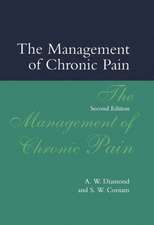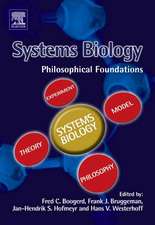Immunity Boosting Medicinal Plants of the Western Himalayas
Editat de Ajay Sharma, Gulzar Ahmad Nayiken Limba Engleză Hardback – 15 mar 2023
This book will be a substantial contribution to the knowledge of the region and the country. Also, the book will be very useful to scientists, graduates, and undergraduates, along with researchers in the fields of natural products, herbal medicines, ethnobotany, pharmacology, chemistry, and biology. Further, it is an equally significant resource for a person working in different traditional medicinal systems; doctors (especially those engaged in Ayurveda, Chinese traditional medicinal system, Amchi, and allopathy); the pharmaceutical industry (for drug design and synthesis); biochemistry and biotechnology sciences; and the agricultural sciences.
| Toate formatele și edițiile | Preț | Express |
|---|---|---|
| Paperback (1) | 1201.56 lei 38-45 zile | |
| Springer Nature Singapore – 16 mar 2024 | 1201.56 lei 38-45 zile | |
| Hardback (1) | 1316.08 lei 3-5 săpt. | |
| Springer Nature Singapore – 15 mar 2023 | 1316.08 lei 3-5 săpt. |
Preț: 1316.08 lei
Preț vechi: 1385.35 lei
-5% Nou
Puncte Express: 1974
Preț estimativ în valută:
251.86€ • 262.62$ • 209.32£
251.86€ • 262.62$ • 209.32£
Carte disponibilă
Livrare economică 28 februarie-14 martie
Preluare comenzi: 021 569.72.76
Specificații
ISBN-13: 9789811995002
ISBN-10: 9811995001
Pagini: 609
Ilustrații: XIX, 609 p. 1 illus.
Dimensiuni: 155 x 235 mm
Greutate: 1.23 kg
Ediția:2023
Editura: Springer Nature Singapore
Colecția Springer
Locul publicării:Singapore, Singapore
ISBN-10: 9811995001
Pagini: 609
Ilustrații: XIX, 609 p. 1 illus.
Dimensiuni: 155 x 235 mm
Greutate: 1.23 kg
Ediția:2023
Editura: Springer Nature Singapore
Colecția Springer
Locul publicării:Singapore, Singapore
Cuprins
1. Introduction to Western Himalayas.- 2. Achillea millefolium L., Common Yarrow.- 3. Arisaema jacquemontii Blume, Jacquemont's Cobra Lily.- 4. Species of Arnebia genus found in the western Himalayas.- 5. Species of the Berberis genus found in the western Himalayas.- 6. Dactylorhiza hatagirea (D.Don) Soo – Himalayan Marsh Orchid.- 7. Fritillaria roylei Hook.f.: Himalayan Fritillary.- 8. Gentiana kurroo Royle: Himalayan Gentian.- 9. Habenaria intermedia D.Don and Habenaria edgeworthii Hook., f. ex Collett.: The Western Himalayan medicinal Plants.- 10. Humulus lupulus L.: Beer plant.- 11. Inula racemosa Hook. f. – Puskarmool: Its ethnobotanical uses, phytochemicals and pharmacological activities.- 12. Juniperus recurva Buch.-Ham. ex D.Don and Juniperus squamata D. Don: Himalayan Juniper.- 13. Lancea tibetica Hook.f. & Thomson: Ethnobotany, phytochemistry and pharmacology.- 14. Malaxis muscifera (Lindley) O. Kuntze. and Malaxis acuminata D. Don.: Jeevak.- 15. Picrorhiza kurroa Royle ex Benth.: Kutki.- 16. Species of the genus Polygonatum found in the Western Himalayas.- 17. Species of the genus Rhodiola found in the Western Himalayas.- 18. Saussurea lappa C.B. Clarke: Kushta/Kut.- 19. Saussurea lappa C.B. Clarke: Kushta/Kut.- 20. Species of the genus Selinum found in the western Himalayas.- 21. Swertia chirayita (Roxb. ex Flem.): Chirayata/Chiretta.- 22. Taxus wallichiana Zucc.: The Himalayan yew.- 23. Tribulus terrestris L.: Gokshur /Gokharu.- 24. Species the Genus Viola found in Western Himalayas.
Notă biografică
Dr. Ajay Sharma is a Natural Product Chemist with a strong background in Organic Chemistry, Phytochemistry, Biochemistry, and Ethnobotany. Presently, he is working as an Assistant Professor at the University Centre for Research and Development, Department of Chemistry, Chandigarh University, Mohali, India. He completed his Graduation (B.Sc. Medical) from Govt. College Hoshiarpur (affiliated to Panjab University, Chandigarh); Master’s Degree in Organic Chemistry (Natural Products) from Punjab Agriculture University, Ludhiana; and his PhD (Organic Chemistry – Natural product) from SLIET (Sant Longowal Institute of Engineering & Technology, Deemed University), Punjab. He has published over 51 peer-reviewed papers and book chapters in reputed international/national journals and books. Presently, his five edited books are under production in different international publication houses like Springer, Taylor & Francis, Elsevier, and Royal Society of Chemistry. He has various Honors/Fellowship/Awards to his credit, i.e., Role of honor from PAU Ludhiana (2011), Merit-cum-topper scholarship during M.Sc. (PAU Ludhiana, 2009–10), MHRD fellowship Award for Ph.D. (2012), Award of INSPIRE fellowship (JRF, 2013) from DST, Award of INSPIRE fellowship (SRF, 2015) from DST, 1st Prize in Poster Award at National Conference (NICS-2016), and Best Poster also. He does research in Organic Chemistry, Natural Products Chemistry, Phytochemistry, and Food Chemistry. His research activities have focused on isolation and characterization of bioactive extracts from traditional medicinal plants and evaluation of their biological potential. Currently, his research group at Chandigarh University is investigating the field of more environmentally friendly synthesis of metal nanoparticles and carbon nanodots using plant extracts/plant-based biomass followed by assessing their biological, catalytic, and sensing potential. Till date, he has successfully guided six M.Sc. dissertation students.
Dr. Gulzar Ahmad Nayik completed his Master’s Degree in Food Technology from Islamic University of Science & Technology, Awantipora, Jammu and Kashmir, India, and PhD from Sant Longowal Institute of Engineering & Technology, Sangrur, Punjab, India. He has published over 75 peer-reviewed research and review papers and over 35 book chapters. He has also edited 11 books so far with Springer, Elsevier, and Taylor & Francis. He has delivered several presentations at various national and international conferences, seminars, workshops, and webinars. He was shortlisted twice for the prestigious Inspire-Faculty Award in 2017 and 2018 from Indian National Science Academy, New Delhi, India. He was nominated for India’s prestigious National Award (Indian National Science Academy Medal for Young Scientists, 2019–20). He also fills the roles of editor, associate editor, assistant editor, and reviewer for many food science and technology journals. He has received many awards, appreciations, and recognitions and holds membership in various international societies and organizations. Dr. Nayik is currently editing several book projects with Elsevier, Taylor & Francis, Springer Nature, Royal Society of Chemistry, etc.
Textul de pe ultima copertă
This book presents a comprehensive guide to traditional immunity-boosting medicinal plants of the Himalayas, their traditional uses, phytochemistry, pharmacology, diversity, conversation, biotechnology, toxicology, as well as future prospective. All the chapters cover the latest advances in ethnobotany, phytochemistry, biochemistry, and biotechnology. The book offers a valuable asset for researchers and graduate students of chemistry, botany, biotechnology, microbiology, and the pharmaceutical sciences. The main purpose of the present book is to draw on the rich culture, folklore, and biodiversity of immunity-boosting medicinal plants of the Western Himalayas, with particular emphasis on the Indian Trans-Himalayan and Western Himalayan region. All the plants included in the present book are extensively used by the local tribes and people for their health-promoting properties from ancient times.
This book will be a substantial contribution to the knowledge of the regionand the country. Also, the book will be very useful to scientists, graduates, and undergraduates, along with researchers in the fields of natural products, herbal medicines, ethnobotany, pharmacology, chemistry, and biology. Further, it is an equally significant resource for a person working in different traditional medicinal systems; doctors (especially those engaged in Ayurveda, Chinese traditional medicinal system, Amchi, and allopathy); the pharmaceutical industry (for drug design and synthesis); biochemistry and biotechnology sciences; and the agricultural sciences.
This book will be a substantial contribution to the knowledge of the regionand the country. Also, the book will be very useful to scientists, graduates, and undergraduates, along with researchers in the fields of natural products, herbal medicines, ethnobotany, pharmacology, chemistry, and biology. Further, it is an equally significant resource for a person working in different traditional medicinal systems; doctors (especially those engaged in Ayurveda, Chinese traditional medicinal system, Amchi, and allopathy); the pharmaceutical industry (for drug design and synthesis); biochemistry and biotechnology sciences; and the agricultural sciences.
Caracteristici
Provides detailed information about the bioactive secondary metabolites of Himalayan plants Discusses the conservations strategies of threatened plants of Himalayan region Covers safety and toxicity of plants of Himalayas and sheds light on market importance and future mandates





















